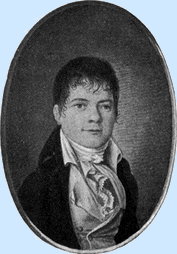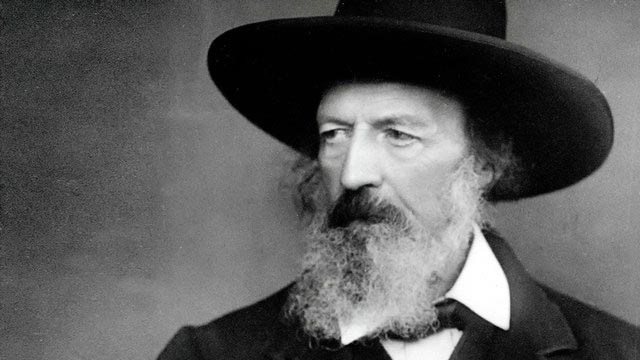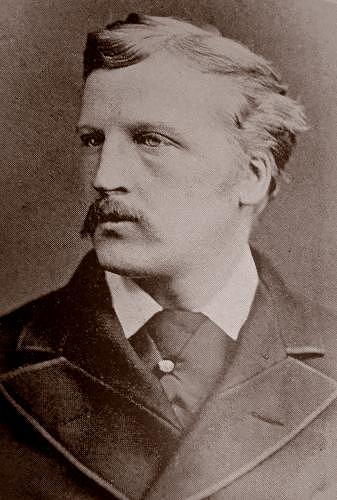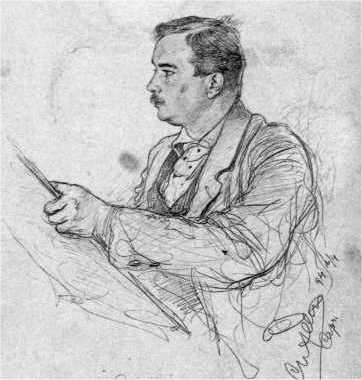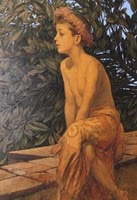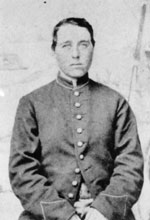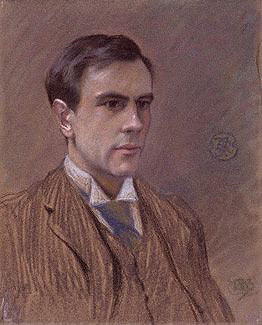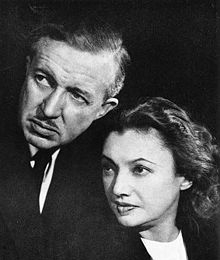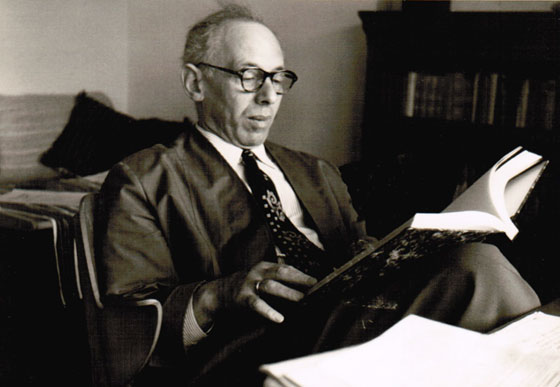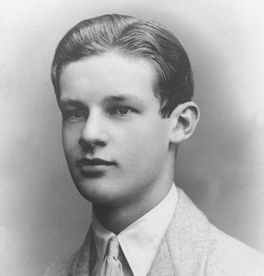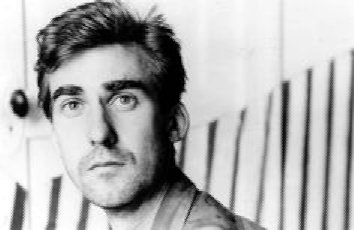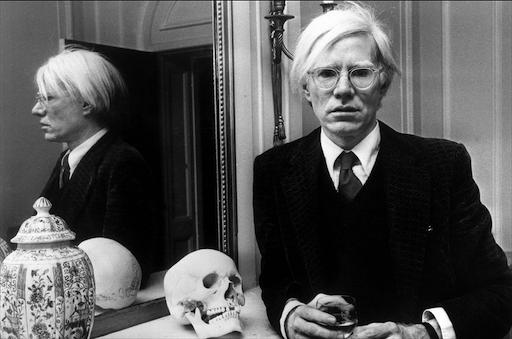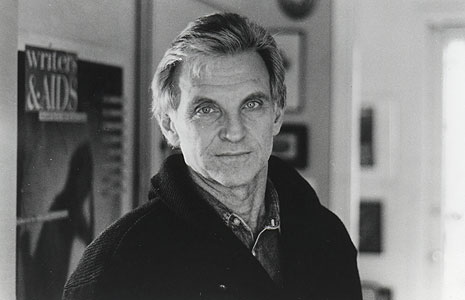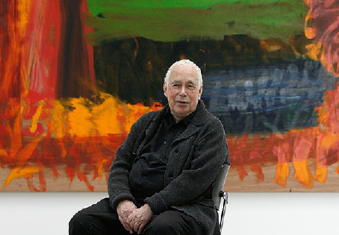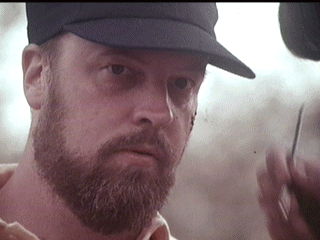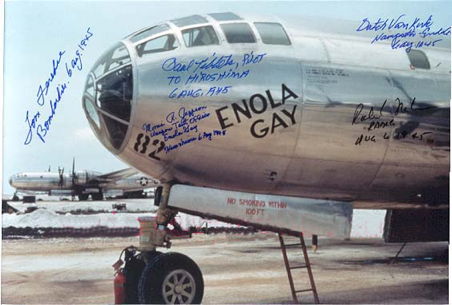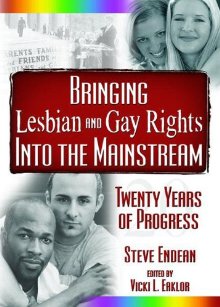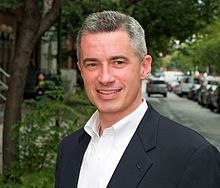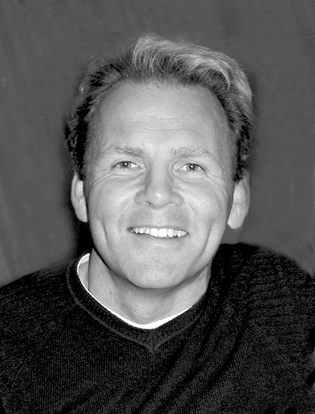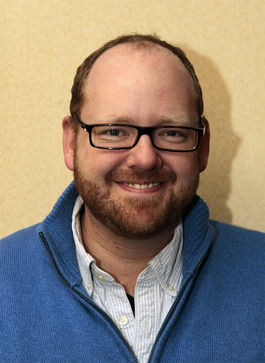|
presents THIS DAY IN GAY HISTORY based on: The White Crane Institute's 'Gay Wisdom', Gay Birthdays, Gay For Today, Famous GLBT, glbt-Gay Encylopedia, Today in Gay History, Wikipedia, and more …
Collected by Ted August 6 [{(o)}]|[{(o)}]|[{(o)}]|[{(o)}]| [{(o)}]|[{(o)}]1637 – The Plymouth, Massachusetts court finds John Alexander and Thomas Roberts guilty of "often spending their seed one upon the other" though they are not charged with sodomy. Both were severely whipped, and Alexander was branded on the shoulder and banished from the colony. Although the colony had made sodomy punishable by death the previous year, it required penetration that was not proven in this case.
1784 – Nineteenth-century Swiss milliner and anthologist Heinrich Hössli (d.1864) was a passionate defender of homosexuality, but his work exerted almost no influence. Hössli was born in Glarus, Switzerland, on August 6, 1784. He received no formal education, but learned the trade of hat-making in Berne. He returned to Glarus, where he became known as the town's leading milliner and interior decorator. At age 26 Hössli married the 25-year-old Elisabeth Grebel in Zurich. The couple did not live together: his wife remained in Zurich and he returned to Glarus. But he visited her often and they had two sons, both of whom later emigrated to the United States. One son disappeared; the other son, who had corresponded with his father about his own homosexuality, died in a shipwreck while returning to Switzerland. (There are indications in his writings that Hössli himself was also homosexual.) A successful businessman, Hössli was able to live a comfortable, if restless life, moving his residence many times. He died in Winterthur, Switzerland, on December 24, 1864. A turning point came in Hössli's life in 1817 when he learned of the execution of Franz Desgouttes for murdering the man he loved, and it was then that he conceived what he afterwards referred to as his "idea," namely, that the understanding of male love of the archaic Greeks had been replaced through the centuries by such strong denial, repression, and condemnation, that even those men who by nature felt such a passion were unable to accept it as genuine and, as a consequence, saw themselves as evil and acted as such. This revelation, that Greek love was an eternal part of human nature, and the dreadful consequences of the suppression of this knowledge, gave Hössli his lifelong mission. He then spent the next years studying the subject and struggling to express himself, publishing the first volume of Eros in 1836. A second volume followed in 1838, but a planned third volume remained unpublished and has apparently been lost. Volume One of Eros established two themes that Hössli continued to elaborate: (1) that society treats homosexuals in the way that previous centuries treated witches and heretics , and (2) that homosexuals are not necessarily effeminate.In Volume 2 of Eros Hössli reformulates and elaborates his theme in two parts: an anthology of male love, and a defense of "Greek love" against what modern critics have made of it. The anthology mainly includes examples from Greek, Roman, and Persian writings. He does not include Plato in his anthology, but he avers that "the dialogues of Plato witness higher and deeper than all these voices of earlier times for my idea." In the second part of volume 2, Hössli refutes nine false statements about the male love of the Greeks, including the accusation that it is child abuse. Hössli's writing can still inspire us with its strong feeling for justice. As Warren Johannson observed, "Eros ranks as the first sustained protest against the intolerance that homosexual love had suffered for centuries in Christian Europe."
1809 – Though heterosexual, Alfred Lord Tennyson (d.1892) wrote poetry dealing with love between men that is still capable of evoking a profound response from gay audiences today and that has an important place in any consideration of gay literary history. In Memoriam is both Tennyson's greatest work and the most beautiful homoerotic elegy in the English language, yet there is little doubt that Tennyson himself was sexually attracted to women. Androgynous male characters and homoeroticism abound throughout Tennyson's poetry, particularly from his early years, but he is often considered one of the stuffiest and most prudish of his generation of writers. Born on August 6, 1809, in Somersby, England, to an Anglican minister and his wife, Alfred demonstrated his considerable poetic talents at a very early age, composing his first lines of verse at age five and his first poem at age eight. He and his brothers Frederick and Charles produced a full book of poetry in 1827, when Alfred was barely eighteen. After studying at Cambridge University his creative activity accelerated, and he published increasingly successful volumes of poetry in 1830, 1832, and 1842. But these were also turbulent years for Tennyson; his father died in 1831; his beloved friend Arthur Hallam (for whom In Memoriam was later written) died in Vienna in 1833; he had a series of painful, unrequited romantic attachments to women during his twenties and thirties; and in 1843 he finally entered a mental hospital to recover from a nervous collapse. In 1845, he was granted a permanent government stipend to support his work, and by 1850, when In Memoriam was published, he had become the favorite of Queen Victoria, who named him Poet Laureate in that year, filling the vacancy left by the death of William Wordsworth. In 1850, he also married the woman he had loved for many years, Emily Sellwood, with whom he later had two children. His successes continued, as Tennyson produced new volumes of poetry and plays (although the latter have been practically forgotten) every two or three years for the remainder of his life. Tennyson was again honored in 1883 by being named the first Lord Tennyson, and even though his reputation among critics waned somewhat as the years passed, he continued to be widely loved and respected until his death from influenza on October 6, 1892. What makes all this remarkable and Tennyson's work of immediate relevance for gay audiences is that Tennyson's extraordinary success and wide following were built on poetry that included numerous homoerotic situations and allusions. However, it is clearly erroneous to call Tennyson a "gay" poet; the term is anachronistic when discussing the Victorian age and it is doubtful that Tennyson ever had sexual contact with another man. Yet Tennyson's work is important to include in any consideration of a larger gay literary heritage because of its profound emotional content and stunning beauty, which can still speak to audiences today, even though it was written during a period often considered sexually and emotionally sterile. The Arthurian Poetry Expressions of love between men and intriguingly androgynous characters are found throughout Tennyson's early poetry. His "Mort d'Arthur" (1842) portrays the passing of the great medieval king as he is attended by his loving, though somewhat wavering, attendant Sir Bedivere; the latter cradles his dying companion in his arms and sheds numerous tears over Arthur's death and the passing of an entire age of heroism. Similarly, "Sir Galahad" (1842) is an evocation of a period and mindset far removed from that of narrow Victorian definitions of masculinity. Calling himself a "maiden knight," Galahad describes his earnest search for the Holy Grail after seeing it once in a vision; Tennyson uses Galahad as a symbol of purity in body and spirit, a man whose "virgin heart" is given to his God. Such androgyny abounds as well in "The Princess" (1847), which concerns the exploits of an effeminate, tender-hearted Prince who loves a feminist, separatist woman; they are finally united after the Prince cross-dresses in order to enter her private university for women. The androgynous Prince continues to challenge Victorian gender stereotypes even after his of the Princess, by imagining a future when the sexes will become increasingly similar to one another. Finally, Tennyson portrays chaste but tenderly expressed love between men in a later poem entitled "The Holy Grail" (1869). Again set at the time of King Arthur, the poem begins with the knight Sir Percivale telling of his exploits to the adoring monk Ambrosius, who "loved him much beyond the rest, / And honor'd him, and wrought into his heart / A way by love that waken'd love within". Percivale, who is good but humanly fallible, is tempted by visions that include a lovely woman beckoning to him but also a splendid knight who "Open'd his arms to embrace me as he came, / And up I went and touch'd him, and he too / Fell to dust, and I was left alone / And wearying in a land of sand and thorns". Percivale fails in his mission to find the Grail but ends up living with the monk, who tries to elicit an admission of love from Percivale. But like his beloved, Ambrosius too is denied that which he most desires, possibly because Tennyson himself could not accept such direct male contact. But even if Tennyson viewed erotic contact between men with some alarm, he cannot be termed simplistically "homophobic," for his greatest achievement was a monumental poem professing his profound emotional attachment to another man. In Memoriam (first published 1850, revised repeatedly thereafter) is a testament to the marriage of souls and lasting emotional ties between Alfred and his friend Hallam, even after the latter's tragically early demise. In Memoriam is both long and difficult, containing 131 separate groups of stanzas, arranged broadly around three Christmas celebrations following Hallam's death. The poem as a whole moves from despair to reconciliation to hope as Tennyson learns to accept the passing of his beloved and even rejoice in another person's happiness. Tennyson's own son Hallam (named after Tennyson's beloved, of course) seemed particularly uncomfortable with the homoeroticism of some of his father's poetry and as an adult expended considerable anxious energy on refuting any "perverse" readings of In Memoriam and earlier works; but in In Memoriam the boundary between platonic and actively erotic forms of love seems fuzzy. In this way, Tennyson challenges our own ability to classify writers as "gay" and "straight."
For ten years before coming to Canada, Campbell travelled throughout North and Central America, writing travel literature and poetry. In the UK, he represented, since 1868, the constituency of Argyllshire as a Liberal Member of Parliament in the House of Commons. He made little impression there, however; the London World referred to Campbell as "a non-entity in the House of Commons, and a non-entity without." Campbell married Queen Victoria's fourth daughter, Princess Louise in 1871. This was the first time a Princess had married a commoner since 1515. The pair shared a common love of the arts, but tended to live apart and never had children. Further, Campbell formed close friendships with men who were rumoured to be homosexually inclined, which raised questions about Campbell's marriage and fuelled rumours around London that Campbell was bisexual, if not largely homosexual in predisposition. Queen Victoria thought her son-in-law could use some toughening up, and arranged for his post in the wilds of her Domain as the 4th Governor General of Canada. He was appointed on October 7, 1878 and sworn in on November 25, 1878, in Halifax, Nova Scotia. At age 33, Lord Lorne became Canada's youngest Governor General, but he was not too young to handle the marginal demands of his post. He and Princess Louise made many lasting contributions to Canadian society especially in the arts and sciences. They encouraged the establishment of the Royal Society of Canada, the Royal Canadian Academy of Arts and the National Gallery of Canada, even selecting some of its first paintings. Campbell was also involved in the completion of the Canadian Pacific Railway and other projects, such as a hospital for British Columbia. In addition to acting as a patron of arts and letters in Canada, Lorne was the author of many books of prose and poetry. His writings show a deep appreciation of Canada's physical beauty. Throughout his term of office, Lorne was intensely interested in Canada and Canadians. He travelled throughout the country encouraging the establishment of numerous institutions, and met with members of Canada's First Nations and with other Canadians from all walks of life. At Rideau Hall, he and Princess Louise hosted many social functions, including numerous ice skating and tobogganing parties as well as balls, dinners and State occasions. One winter day in 1881, Princess Louise rode her sleigh on the Rideau Canal. The sleigh tipped, she fell out and cut her ear. That was the last straw and she promptly returned to England. The Duke remained in Canada ... to do still more "exploring" of this wild frontier. He eventually followed her in 1883. The marriage was not a happy one. Lorne is rumored to have been bisexual, and certainly he had close friendships with several known homosexuals such as the author Horatio Brown and artist Lord Ronald Gower. Legend has it that Princess Louise bricked up a window in Kensington Palace to stop Lorne's nighttime 'cruising' for soldiers in the park. More importantly, Lorne was an associate and confidant of the handsome but dissolute homosexual Frank Shackleton, (brother of the explorer Sir Ernest), who was a key suspect in the theft of the Irish Crown Jewels. Shackleton was to defraud Lord Ronald Gower of money, and there is clear evidence that official investigation of the theft of the Crown Jewels was suppressed. It has been suggested that this is because authorities became aware of the Lorne connection to Shackleton.
1857 – (Christian Wilhelm) C.W. Allers (d.1915) was a German painter and printmaker. Allers, the son of a merchant, was born 1857 in Hamburg. He first worked as a lithographer, and in 1877 he moved to Karlsruhe where he continued to work as a lithographer. In 1880/1881 he served in the German navy in Kiel where the German painter Anton Alexander von Werner supported him. In Kiel he got to know the poet Klaus Groth, who became a friend of his. Allers became well-known when he published his collection of prints Club Eintracht in 1888. Several other books and maps (collections of prints) followed, e.g. about Bismarck, so at the beginning of the 1890s he was able to build a villa on Capri. He lived there for many years, also spending some time in Hamburg, Karlsruhe and travelling around the world. His drawings are rich in detail and are of realistic style, so they often seem clinical. Although the drawings look realistic, Allers sometimes added persons to scenes who were never at that location. In this respect, he was not a realist. Technically, Allers often used pencil and drew scenes of everyday life, travelogue and portraits. In autumn 1902, there was a scandal. Friedrich Alfred Krupp, a member of the famous industrial dynasty, another well-known German living in Capri, was accused by some italian newspapers of homosexuality and pederasty. It is uncertain how much truth there was in the accusations or if it was part of an extortion attempt by a journalist. Some weeks later, Allers was also accused, in court. (Krupp died some weeks later, possibly a suicide.) Allers managed to escape before the trial began, which led to a sentence of 4½ years imprisonment, pronounced in absentia. According to Tito Fiorani, 'Allers had distinctly homosexual tendencies, and liked to surround himself with boys, whom he often used as models.'
Allers left Capri and began travelling around the world for more than 10 years, staying some time in New Zealand, Samoa, and Australia. During this time, he often used the pseudonym W. Andresen, and earned money by making portraits of wealthy people. He died in 1915 in Karlsruhe some months after returning to Germany.
1862 – A transgender soldier, Albert Cashier (1843 – 1915), enlists in the 95th Illinois Infantry and is assigned to Company G of the Union Army. Cashier adopted the identity of a man before enlisting, and maintained it for most of the remainder of his life. He became famous as one of a number of women soldiers who served as men during the Civil War, although the consistent and long-term commitment to the male identity has prompted some contemporary scholars to suggest that Cashier was a trans man. In 1911, Cashier was hit by a car that broke his leg. A physician discovered his secret in the hospital, but did not disclose the information. On May 5, 1911, because he was no longer able to work, Cashier was moved to the Soldiers and Sailors home in Quincy, Illinois. During this stay, Albert was visited by many of his fellow soldiers from Ninety-fifth Regiment. He lived there until his mental state deteriorated. He was moved to the Watertown State Hospital for the Insane in March 1914. Attendants at the Watertown State Hospital discovered that Albert was female when giving him a bath, at which point – and at age 70 – he was made to wear women’s clothes again after fifty years. His tombstone reads "Albert D. J. Cashier, Co. G, 95 Ill. Inf." His birth name of Jennie Hodgers was discovered nine years later so a second tombstone with both names was placed beside the original.
1862 – Goldsworthy Lowes Dickinson (d.1932), a Cambridge classicist, is significant for the glbtq legacy as the author of the immensely popular The Greek Way of Life (1896), in which he delicately discusses homoeroticism; as the creator of a frank account of homosexuality in his posthumously published autobiography; as the subject of a biography written by his friend E. M. Forster; and as an important disseminator of Plato and his idealization of male friendship. Goldsworthy Lowes Dickinson was born in London on August 6, 1862. His parents were artists and early Christian socialists. Educated at Charterhouse School and King's College, Cambridge, he graduated in 1884, as an outstanding scholar. That same year, he was also inducted into the Cambridge Conversazione Society, the Apostles or fratres, a club that once included Alfred Lord Tennyson and Arthur Hallam and that became the progenitor of the Bloomsbury group. He immersed himself in classical and modern civilization, avidly reading Plato, Shelley, and Goethe. In 1887, he was named fellow of his old college which provided a more stable professional environment. In 1892, however, his fellowship was not renewed. He then became a librarian, but was appointed college lecturer in political science in 1896. In 1920, he was given a pension fellowship, tenable for life. He worked also as a lecturer at the London School of Economics and Political Science. When World War I broke out, Dickinson was deeply shocked. He founded the pacifist Bryce Group, became president of the Union of Democratic Control, joined Bertrand Russell in his stance against the war, advocated the establishment of the League of Nations (a phrase he possibly coined), and was instrumental in its conception. He hoped that his work on behalf of the League would help end future warfare. He died on August 3, 1932. Dickinson's most popular text, The Greek View of Life (1896), illustrates his fascination with Plato and with ancient Greece, often seen as a golden age of homoeroticism. Due to its popularity (it is still being used in college classrooms), the book exposed, probably for the first time, a large audience of non-specialists to, among other topics, Platonic love. Dickinson alludes to Socrates's homoerotic attraction and allure: "Young men and boys followed and hung on his lips wherever he went . . . . His relation to his young disciples was that of a lover and a friend; and the stimulus given by his dialectics to their keen and eager minds was supplemented and reinforced by the appeal to their admiration and love of his sweet and virile personality." Dickinson notes that "romance" took the form of "passionate friendship between men," which he illustrates by citing the Theban Sacred Band, an army of male lovers; several legendary homoerotic couples: Achilles and Patroclus, Pylades and Orestes, Harmodius and Aristogeiton, Solon and Peisistratus, Socrates and Alcibiades, Epaminondas and Pelopidas; and the entire speech of Diotima in the Symposium, the source par excellence for Platonic love. Dickinson reaches a remarkably candid conclusion about Platonic love and homoerotic desire: "That there was another side to the matter goes without saying. This passion, like any other, has its depths, as well as its heights." Dickinson's candor here is especially noteworthy considering that he published The Greek Way of Life only one year after Oscar Wilde had been sent to prison for homosexual liaisons or "gross indecency." Composed in middle age, but not published until some forty years after his death, Dickinson's Autobiography remains our most valuable source of information on Dickinson's (sex) life. Dickinson describes how he had numerable crushes on attractive students and how he fell in love with several men, including the Bloomsbury art critic Roger Fry, the undergraduates Ferdinand Schiller and Oscar Eckhard, and the much younger Peter Savary. Judging from pictures, all these men were extremely good-looking. In most (if not all) cases, however, it seems that Dickinson never consummated his love affairs. Paul Robinson summarizes Dickinson's adult sexual life as "an intensely romantic attachment, passionate kisses and warm embraces (with a hint of fetishism), followed by relief through masturbation." Another complication, of course, arose from the increasing difference in age between him and his objects of affection, who were also often mostly heterosexual. Some passages of the Autobiography verge on the pornographic. Dickinson admits to a fetish for shiny leather boots and for sado-masochistic pleasure: "My earliest remembrance of sexual feeling was connected with boots . . . . At night, when I had gone to bed, I used to steal out to my father's dressing room, and excite myself over his boots." He found being trodden on especially arousing. E. M. Forster's biography of his friend, whom he also affectionately called Goldie, is reticent as to the details of its subject's sex life. Much of this reticence is indubitably due to the fact that the book was published in 1934, when homosexuality was illegal and when more candid revelations could have had dire consequences for surviving members of Dickinson's circle. Still, careful readers of the biography would have had no trouble discerning Dickinson's homosexuality. Vague references such as "he was never drawn to women in the passionate sense, all his deepest emotions being towards men" abound. His legacy to us is that in The Greek Way of Life, Dickinson opened a fascinating window to Greek homoeroticism.
1885 – The British Parliament votes to make homosexual acts a criminal offence. The Criminal Law Amendment Act 1885 strengthened existing legislation against prostitution and recriminalised male homosexuality. It extended the buggery laws to include any kind of sexual activity between males. The "Section 11" clause provided for a term of imprisonment "not exceeding two years", with or without hard labour, for any man found guilty of gross indecency with another male, whether "in public or in private". No definition was given of what, exactly, constituted "gross indecency," as Victorian morality demurred from giving precise descriptions of activity considered immoral. In practice, "gross indecency" was widely interpreted as any male homosexual behaviour short of actual sodomy, which remained a more serious and separate crime. It would take more than 80 years before decriminalisation would take effect.
1893 – Guthrie McClintic, director, was born on this date (d.1961). For forty years, actress Katharine Cornell (1893-1974) and her husband, director Guthrie McClintic, sustained one of the most celebrated and successful partnerships in the American theatre. McClintic first directed Cornell in 1925 when she starred in Michael Arlen's The Green Hat. They went on to collaborate on a total of twenty-eight productions, most of which they presented under their own management. They achieved their greatest success in 1931 when, under McClintic's direction, Cornell portrayed Elizabeth Barrett in The Barretts of Wimpole Street. Even in theatrical circles, little was known about Cornell's and McClintic's sexual lives beyond the general impression that both were gay. However, it seems clear that their relationship was a non-sexual one, at least after the first few years, and that both partners consistently pursued same-sex attachments. Nevertheless, McClintic and Cornell remained a devoted couple from their marriage in 1921 until McClintic's death in 1961. Guthrie McClintic was born in Seattle, Washington. As a young boy, he ran away from home to join a repertory company. Stranded, he was rescued by his parents, who promised to support him in his theatrical ambitions. After attending local Seattle schools and the University of Washington, McClintic studied at New York's American Academy of Dramatic Arts from 1910 to 1912. He began his career as an actor, but soon became a stage manager and casting director for a leading Broadway producer, Winthrop Ames. Ames offered to finance a production for Guthrie to direct as soon as a suitable project could be found. The turning point in McClintic's and Cornell's lives and careers took place in 1921 when, still working as a casting director, Guthrie saw Cornell during auditions for a play. McClintic (whose first brief marriage to actress Estelle Winwood ended in divorce) and Cornell were wed on September 8, 1921. On December 23, 1921, McClintic, having found his project, made a successful Broadway directorial debut with a production of A A Milne's The Dover Road. The same year Cornell became a star playing Sydney Fairfield, the daughter of a shell shocked World War I veteran, in Clemence Dane's A Bill of Divorcement. Cornell and McClintic reached the height of their renown during the 1930s and early 1940s. With McClintic's encouragement, Cornell turned from the melodramas in which she first gained popularity to play a range of classical and challenging contemporary roles. Cornell worked almost exclusively with McClintic after their initial success together. Throughout his career, however, McClintic continued to direct plays in which Cornell did not appear. Cornell and McClintic were markedly dissimilar in personality and style of living, and they designed their living arrangements to accommodate these disparities. Offstage, Cornell was, like Greta Garbo (to whom she was often compared), reserved, self-effacing, and somewhat aloof. Over the years, she carried on a handful of long-term romances with women. In contrast, McClintic was nervous, hot-tempered, sociable, gossipy, and sexually promiscuous. Early in their marriage, the couple rented (and later purchased) a large house in Manhattan, which they furnished with pieces used in their productions. By mutual agreement, the third floor of the residence was her exclusive domain, the fourth floor was his, while the floors below were open to both. Their careers faltered after World War II, though McClintic and Cornell continued to enjoy some notable successes, as in their productions of Antony and Cleopatra (1947), which attained a long-run record for that play, and The Constant Wife (1951). Cornell, who had long suffered from stage fright, retired shortly after McClintic's death in 1961
Fritz Valentin was born in Hamburg at the end of the 19th century. His father Albert was a secular Jew. Valentine's mother, Emma, came from a Jewish- Catholic family. She was Protestant. Valentin was baptized Christian. Fritz Valentin's father worked as a doctor in the Hamburg district of St. Georg . Valentin attended the Johanneum's school for scholars. At the beginning of the First World War, at the age of 16, he volunteered for military service. Valentin fought on the western front for four years, first as a soldier without command, later as an officer. After the end of the war, Valentin enrolled at the Hamburg University, which was newly founded in 1919. At first he studied archeology and ancient Indo-European languages, but later turned to law. In 1922 he passed the first and in 1924 the second state examination in law. Valentin became a public prosecutor, in 1927 a criminal judge at the local court and in 1933 an examining magistrate at the regional court for criminal and disciplinary matters of non-judicial officials. In 1923 he married. The front-line combatant privilege allowed him to continue to work as a judge after the National Socialists came to power in 1933. However, he lost his function as a disciplinary judge. After Valentin criticised the defamation of the Jews by the National Socialists in Germany, he was given leave of absence and finally forced into retirement. He stuck to the fight against anti-Semitism with the written word. In 1939 Valentin emigrated to England with his wife Cili and their children. An earlier attempt to go into exile in the United States had previously failed. In Croydon the family lived in financially modest circumstances. In April 1945 Valentin got a job in a special unit made up of German lawyers. Their task was to familiarize English officers with the German legal system. In 1946 Valentin returned to Hamburg from exile. In the Hanseatic city he resumed his work as a judge and exercised this until 1964. The 1951 "three-mark judgment" of Valentins caused a stir. As a judge, he had to make a final decision in the appeal of the sentence or two men who had been sentenced to eight months in prison for homosexual activity under Paragraph 175 of the Criminal Code. Valentin reduced the sentence to the minimum sentence of one day in prison or three German marks. The reasoning for his verdict was that although both men had to be punished according to the law, their "crime" was actually minor. His verdict was a scoldingof the existing law. Valentin argued that the law imposed unnecessary restrictions on men who were homosexually inclined. The required suppression of the sex drive is a great hardship. Valentin concluded with a plea for an extensive revision of the law. Sexual acts between men should normally not be criminalized. 18 years later, in 1969, the law was changed almost as Valentin suggested in his judgment in the early 1950s.
1908 – George James Lees-Milne (d.1997) was an English writer and expert on country houses. He was an architectural historian, novelist, and a biographer. He is also remembered as a diarist. His homosexuality was revealed postumously in the diaries. A chance discovery of a brutish renter desecrating a William Kent building in north of Oxford purportedly led Lees-Milne to vow to preserve the country houses of England. Having attended a stenography school at his father's insistence, Lees-Milne acted as secretary to George Lloyd, 1st Baron Lloyd of Dolobran (1879-1941), at the time high commissioner to Egypt, 1931-1934 and then briefly to Sir Roderick Jones (1877-1962), owner of Reuters, 1934-1935. When Philip Henry Kerr, 11th Marquess of Lothian (1882-1940) instituted a larger role for country houses in the National Trust, the writer Vita Sackville-West secured Lees-Milne the job of administrator ("secretary") to the new Country Houses Committee (later renamed Historic Buildings Committee) of the National Trust in 1936. He remained there until 1966. Lees-Milne helped saved these building from Depression-era debt and disbursement by changing enacting the National Trust Acts 1937 and 1939, allowing families donate their houses to the Trust and occasionally remain in them. Lees-Milne was visiting Diana Mosley when King Edward VIII abdicated. His visit there was to examine the seventeenth-century house she and her husband Sir Oswald Mosley were then renting; he recorded later how he and Diana (her husband was in London) had listened to the King's broadcast abdication speech with tears running down their faces. He had loved her brother Tom Mitford at Eton, and was devastated when Tom was killed in action in Burma in 1945. He married Alvilde, Viscountess Chaplin, née Bridges, a prominent gardening and landscape expert, in 1951. Alvilde Lees-Milne died in 1994. Both Lees-Milne and Alvilde were bisexual, and for a period Alvilde had lesbian affairs with Vita Sackville-West and Winnaretta Singer, among others His wartime diaries, Ancestral Voices, appeared in 1975 followed by Prophesying Peace in 1977. In 1980 he brought out the first volume of his two-volume biography of the diplomat (and Vite-Sackville spouse) Harold Nicolson. The first of the two diaries published in his lifetime, Caves of Ice, appeared in 1983 and the second, Midway on the Waves in 1985. His People and Places: Country House Donors and the National Trust was issued in 1992. The evaluations contained in their memoirs, of his friends, National Trust donors and others shocked the reading public. Alvilde's health declined first and she died of a stroke in 1994. Encouraged by the notoriety of his diaries, he published Fourteen Friends in 1996 with sketches of Sacheverell Sitwell and others whom he termed formative for him.Lees-Milne himself succumbed to cancer at the end of 1997. His ashes--as were his wife's--were scattered in the garden at their Essex House. His later diaries were published in the following years.
1923 – Jess Collins (d.2004), simply known today as Jess, was an American visual artist. Jess was born Burgess Franklin Collins in Long Beach, California. He was drafted into the military and worked on the production of plutonium for the Manhattan Project. After his discharge in 1946, Jess worked at the Hanford Atomic Energy Project in Richland, Washington, and painted in his spare time, but his dismay at the threat of atomic weapons led him to abandon his scientific career and focus on his art. In 1949, Jess enrolled in the California School of the Arts (now the San Francisco Art Institute) and, after breaking with his family, began referring to himself simply as "Jess". He met Robert Duncan in 1951 and began a relationship with the poet that lasted until Duncan's death in 1988. In 1952, in San Francisco, Jess, with Duncan and painter Harry Jacobus, opened the King Ubu Gallery, which became an important venue for alternative art and which remained so when, in 1954, poet Jack Spicer reopened the space as the Six Gallery. Many of Jess's paintings and collages have themes drawn from chemistry, alchemy, the occult, and male beauty, including a series called Translations (1959-1976) which is done with heavily laid-on paint in a paint-by-number style. In 1975, the Wadsworth Atheneum Museum of Art displayed six of the "Translations" paintings in their MATRIX 2 exhibition. Collins also created elaborate collages using old book illustrations and comic strips (particularly, the strip Dick Tracy, which he used to make his own strip Tricky Cad). Jess's final work, Narkissos, is a complex rendered 6'x5' drawing owned by the San Francisco Museum of Modern Art.
1928 – Andrew Warhola, known as Andy Warhol (d.1987), was an American artist of Slovak origin and a central figure in the movement known as pop art. After a successful career as a commercial illustrator, Warhol became famous worldwide for his work as a painter, an avant-garde film-maker, a record producer, an author, and a public figure known for his membership in wildly diverse social circles that included bohemian street people, distinguished intellectuals, Hollywood celebrities and wealthy aristocrats. A controversial figure during his lifetime (his work was often derided by critics as a hoax, or 'put-on'), Warhol has been the subject of numerous retrospective exhibitions, books, feature and documentary films since his death in 1987. Born Andrew Warhola, Jr. on August 6, 1928 into a working-class family in Forest City, Pennsylvania, Warhol attended art school at the Carnegie Institute of Technology in Pittsburgh. He moved to New York in 1949, where he changed his named to Andy Warhol and made friendships with Jasper Johns and Robert Rauschenberg. Warhol coined the phrase 15 minutes of fame, which refers to the fleeting condition of celebrity that attaches to an object of media attention, then passes to some new object as soon as the public's attention span is exhausted. Warhol is best known for his extremely simple, larger-than-life, high-contrast colour paintings, silk-screen prints of packaged consumer products, everyday objects - such as Campbell's Soup cans, poppies and the banana appearing on the cover of the album The Velvet Underground and Nico (1967) - and for his stylised - and much pastiched - portraits of twentieth century celebrity icons - such as Marilyn Monroe, Elvis Presley, Jacqueline Kennedy Onassis and Elizabeth Taylor. He was also a highly influential and innovative film-maker, although his work, largely controlled by his estate and commercially unavailable, has been little seen in recent years. Warhol and other pop-artists helped redefine the artist's position as professional, commercial, popular; a logical and valuable part of society. He did this using methods, imagery and talents that were (or at least seemed to be) available to everyone. Perhaps that has been the most meaningful result of (his) Pop Art: a philosophical and practical incorporation of art into society, art as a product of society. Warhol was one of the first major homosexual American artists to be open about his sexuality. Many people think of Warhol as 'asexual' and merely a 'voyeur', but these notions have been debunked by biographers, explored by other members of the factory scene such as Bob Colacello (in his book Holy Terror: Andy Warhol Up Close), and by scholars. The question of how his sexuality informed Warhol's work and shaped his relationship to the art world is a major subject of scholarship on the artist, and is an issue that Warhol himself addressed in interviews, in conversation with his contemporaries, and in his publications. Indeed, the gayness that Warhol projected in both his art and his public persona contrasted sharply with the macho posturing that had dominated the art world in the 1950s. But such openness carried a price. When Warhol asked why his idols, Jasper Johns and Robert Rauschenberg, avoided him, a mutual friend, filmmaker Emil de Antonio, answered, "Okay, Andy, if you really want to hear it straight, I'll lay it out for you. You're too swish, and that upsets them." In defiance, Warhol emphasized his effeminacy even more. From childhood Warhol embraced the myth of stardom. His attraction to the young and famous motivated some of his first silkscreen paintings, which were based on images of Troy Donahue and Elvis Presley and date from 1962. Warhol's identification with these celebrities is two-fold, both as objects of desire and as role models. But he also screened images of death and disasters taken from the tabloids. When the theme of tragedy coincided with his fascination with stardom, Warhol found the subject of his best-known group of celebrity portraits: Marilyn Monroe. In his "gold Marilyn" series, initiated shortly after her suicide in August 1962, Warhol contrived the effect of a gilded Byzantine icon, but substituted for the Virgin Mary an image whose face is suffused with eroticism. It stunningly evokes the need to love and to be loved.
Throughout his career, Warhol produced erotic photography and drawings of male nudes. Many of his most famous works (portraits of Liza Minnelli, Judy Garland, Elizabeth Taylor, and films like My Hustler, Blow Job, and Lonesome Cowboys) draw from gay underground culture and/or openly explore the complexity of sexuality and desire. Many of his films premiered in gay porn theatres. That said, some stories about Warhol's development as an artist revolve around the obstacle his sexuality initially presented as he tried to launch his career. The first works that he submitted to a gallery in the pursuit of a career as an artist were homoerotic drawings of male nudes. They were rejected for being too openly gay. He was never political, and more a voyeuristic dandy than an involved homosexual. Nevertheless he supported the careers of gay artists such as Keith Haring and Jean-Michel Basquiat. Warhol died in New York City from a routine gallbladder surgery at the age of 58. Warhol was afraid to enter hospitals and see doctors, so he had delayed having his recurring gallbladder problems checked.
His will established a foundation to help young artists. However, to an extent, the evolution of his now accepted Pop style can be traced to the years when Warhol was first dismissed by the inner circles of the New York art world and thus created his own.
1930 – Today is the birthday of Martin Duberman, the American historian, playwright, and activist. He is the Distinguished Professor of History Emeritus at Lehman College and the Graduate School of the City University of New York. He was the founder and first director of the Center for Lesbian and Gay Studies at the CUNY Graduate School. He has authored over twenty books including Charles Francis Adams (for which he won the Bancroft Prize), James Russell Lowell (a National Book Award finalist), Paul Robeson, Stonewall, and the stunning memoir Cures: A Gay Man's Odyssey. His play In White America won the Vernon Rice/Drama Desk Award for Best Off-Broadway Production in 1963. His book on the history of Stonewall was made into a movie of the same name in 1995. He also co-edited the groundbreaking Hidden History: Reclaiming the Gay and Lesbian Past. His most recent book is Waiting to Land: A (Mostly) Political Memoir, 1985-2008. In 2007 he received the Pioneer Award from Lambda Literary Foundation.
1932 – (Sir Gordon) Howard Hodgkin CH CBE (d.2017) was a British painter and printmaker. His work is most often associated with abstraction. Gordon Howard Eliot Hodgkin was born in Hammersmith, London, the son of Eliot Hodgkin, a manager for the chemical company ICI and a noted amateur horticulturist, and his wife Katherine, a botanical illustrator. During the Second World War, Eliot Hodgkin was an RAF officer, rising to Wing Commander, and was assistant to Sefton Delmer in running his black propaganda campaign against Nazi Germany. During the Second World War, Hodgkin was evacuated with his mother and sister to the USA, where they lived on Long Island, New York. On returning, he was educated at Eton College and then at Bryanston School in Dorset. He had decided on a career in art in early childhood and ran away from school to pursue this. He studied at the Camberwell Art School and later at the Bath Academy of Art in Corsham, where Edward Piper studied drawing under him. Hodgkin's first solo show was in London in 1962. In 1980, Hodgkin was invited by John Hoyland to exhibit work as part of the Hayward Annual at the Hayward Gallery along with Gillian Ayres, Basil Beattie, Terry Setch, Anthony Caro, Patrick Caulfield, Ben Nicholson and others. In 1984, Hodgkin represented Britain at the Venice Biennale, in 1985 he won the Turner Prize, and in 1992 he was knighted. In 1955, Hodgkin married Julia Lane, by whom he had two children. Hodgkin knew he was gay, even when he married, and later left his wife. In 2009, The Independent reported that he had been with his partner, the music writer Antony Peattie, for 20 years. They lived in a four-storey Georgian house in Bloomsbury, near the British Museum. On 9 March 2017, Hodgkin died at the age of 84 in a hospital in London.
1938 – The career of filmmaker Paul Bartel (d. 2000) is in many respects typical of the modern independent director/producer. His filmography as a director is slight (ten features and a couple of television shows between 1969 and 1993). He tended to work when and where he could, with very low budgets, in disreputable genres, often writing and acting in his films and in those of others and calling on friends such as actress Mary Woronov to bring what star power they could to his work. That Bartel was openly gay was not the issue in the independent film world that it would have been in mainstream film, which has so much more invested culturally and economically in the heterosexuality of its interpreters. In a 1998 interview in The Advocate, Bartel said "I go to commercial Hollywood films and often think how glad I am that I didn't pursue a career in that kind of filmmaking"--a statement that may say as much about the opportunities available to openly queer filmmakers in Hollywood during his heyday as about where his own interests lay. Born in Brooklyn on August 6, 1938, Bartel was the classic future filmmaker, creating marionette shows at the age of five, discovering movies and directors as a teenager, and by sixteen shooting his own animated shorts. Early on he evinced a talent for obtaining resources for little or no money--persuading his father to buy him a 16mm camera and conning a high school teacher into excusing him from a semester to work on an elaborate animated project (a 3,000-cel undertaking that Bartel convinced the whole class to work on). This talent would serve him well throughout a flashy but far from lucrative career outside the mainstream. After high school, Bartel worked in the Army Signal Corps Pictorial Center in Queens as a script clerk and assistant director on training films and documentaries. Fluent in French and Italian, he studied theater and film at UCLA and won a Fulbright scholarship that brought him to work at Rome's Cinecitta Studios. Bartel moved to New York City in the early 1960s, where he met future collaborator Mary Woronov and by the end of the decade had made his first feature, The Secret Cinema (1969), a black-comic tale of a woman whose fears that her life is being filmed for the entertainment of her friends turn out to be true. Three years later the director made Private Parts (1972), another black comedy whose title was sometimes printed as Private Arts or Private Party by skittish newspapers. Private Parts introduces a typical Bartel tableau, a depraved San Francisco hotel riddled with leather queens, transvestites, runaways, and other social deviates, all treated as amusing denizens of the demimonde. Bartel's career was kick-started the following year by his association with exploitation maestro Roger Corman, for whom he made Death Race 2000 (1973). Bartel's vision of a future world in which drivers get points for running down pedestrians became a cult favorite and triggered a sequel, Cannonball (1976). Six years later came Eating Raoul, the 1982 film that remains, to most Bartel watchers, his best. This edgy comedy features Paul and Mary Bland (played by Bartel and Mary Woronov), a nerdish, sex-hating couple who realize their dream of opening a restaurant by murdering and robbing swingers. Eating Raoul's satirical take on marriage, adultery, cannibalism, the cult of "good taste," entrepreneurship, and swinging won it more critical and commercial success than any of his other films. It was chosen for such prestigious venues as Cannes and the New York Film Festival. Eating Raoul did not catapult Bartel out of the minor leagues, however, perhaps because he had no more interest in the mainstream than the mainstream had in him. He made a few more films, some of them, such as The Longshot (1986) and his last effort, Shelf Life (1993), barely released. Fans of Divine gave Lust in the Dust (1985), a comic western promoted as a kind of queer Blazing Saddles, a modicum of notoriety. In addition, Bartel gained some cachet from The Class Struggle in Beverly Hills (1989), where he had a larger (but not large) budget and better-known actors such as Jacqueline Bisset. The film was not successful, but it was hailed in some quarters for its caustic humor, political savvy, and casual introduction of a heated sex scene between Robert Beltran and Ray Sharkey. Bartel's ultimate importance may lie less in his directorial efforts, which are variable in quality, than in his unwavering presence as an inspiring figure in the independent film world, particularly to queer filmmakers, an image reinforced by his genial, bear-like demeanor and eagerness to help struggling young beginners. He probably survived as much through his acting in both mainstream and independent films — Heart Like a Wheel, National Lampoon's European Vacation, Rock and Roll High School, Basquiat, and Billy's Hollywood Screen Kiss are among his 77 acting credits — as through his own films. Bartel died on May 13, 2000 of a heart attack two weeks after undergoing surgery for liver cancer. At the time of his death, he was preparing a sequel to Eating Raoul, set twenty years after the original.
1948 – Steve Endean (d. 1993) was one of the most important glbtq activists of the post-Stonewall era. Termed "visionary" by all who knew him, he also stirred controversy within and outside gay politics in his conviction that "mainstreaming" the movement was the way for glbtq Americans to achieve equality. To that end, he became the nation's first gay rights lobbyist in 1978 and two years later founded the Human Rights Campaign Fund, now the Human Rights Campaign, America's largest glbtq political organization. Stephen Robert Endean was born on August 6, 1948, in Davenport, Iowa. He grew up in the Midwest and attended the University of Minnesota (1968-1972) as a political science major. Putting theory into practice, he soon became involved in local and state politics but feared that his sexuality was incompatible with a public life. Initially thinking, in his words, that he must "stop being gay" in order to pursue a political career, he "discovered being gay isn't specific acts but a state of mind." From then on he devoted his life to the gay rights movement (the term then in use) and to legislative action, founding Minnesota's first gay and lesbian political group (Gay Rights Legislative Committee) in 1971. He became the state's first gay and lesbian rights lobbyist, working on such landmark measures as the Twin Cities' gay rights ordinances (passed in the mid-1970s) and Minnesota's state-wide non-discrimination bill (finally passed only a few months before Endean's death in 1993). To complement his small income as a lobbyist, he worked at the coat check counter at Sutton's, a popular Minneapolis gay bar, advertising "Well-Hung Coats by Wee-Bee [his nickname]," and used that as another opportunity for politicking. The backlash against gay rights and other progressive causes in the late 1970s solidified Endean's view that nationwide action, especially a national gay and lesbian rights bill, was essential. He was an early Co-Chair of the National Gay Task Force Board of Directors, and was among those who fought — bravely, but unsuccessfully — repeals of gay rights measures in Dade County, Florida (1977) and St. Paul, Minnesota (1978). By late 1978, when the murders of Harvey Milk and Mayor George Moscone in San Francisco sparked a renewed wave of protest, Endean had moved to Washington, D. C., to become Director of the fledgling Gay Rights National Lobby. Gay Rights National Lobby was but the first of Endean's three-pronged plan for a fully mature political movement, which, in his view, demanded lobbying, raising money for gay-friendly candidates, and creating grassroots pressure. Thus, while leading GRNL, he launched the Human Rights Campaign (Fund) in 1980, the first national gay rights political action committee, and became its first Executive Director. Conflicts with other activists, including Advocate publisher David Goodstein, led to Endean's removal from both GRNL and HRC(F) in 1983, but he returned to GRNL in 1985; after the two organizations merged later that year, Endean's Fairness Fund, a grassroots program to generate constituent mail, became HRC(F)'s Field Division, later renamed Speak Out. By this time AIDS was a personal as well as national issue: diagnosed HIV-positive in 1985, Endean devoted increasing energy to AIDS issues through Speak Out, while also advocating coalition-building, especially with feminists and African Americans, and continuing the fight for national legislation. Although Endean's declining health forced his retirement on disability in 1991, he initiated the National Endorsement Campaign, to persuade political and media opinion leaders publicly to support gay and lesbian rights, and began writing his movement memoir, Into the Mainstream. The same year he saw the National Gay and Lesbian Civil Rights Act reintroduced in Congress with over 100 co-sponsors. No such bill has yet been passed, but many of its goals--in employment, health care, and domestic partnership rights--have been accomplished by other means. These gains stand as legacies of his energy and vision. A self-described "Midwestern Catholic boy" who loved sports and sex, Steve Endean became a devoted member of the Metropolitan Community Church, writing that "my quest for civil rights, equal justice and human dignity was a part of God's calling for me." In a letter to a friend he added, "when I think about 'my family' I not only think of family and friends but in terms of the broader gay and lesbian community." Steve Endean died of AIDS-related complications on August 4, 1993.
1957 – American politician Jim McGreevey served as the 52nd Governor of New Jersey from until November 15, 2004, when he left office three months after admitting that he had had an extramarital affair with a male employee. Upon publicly revealing his homosexuality, McGreevey became the first openly Gay state governor in United States history. Among McGreevey's accomplishments as governor were implementing a stem cell research plan for the state, heavily lobbying for the state's first domestic partnership law for same-sex couples and signing such a law in early 2004. In early 2002, McGreevey was criticized for appointing Israeli national Golan Cipel as homeland security adviser even though he lacked experience or other qualifications for the position. Cipel resigned but threats from his lawyers about sexual harassment lawsuits prompted McGreevey to announce, on August 12, 2004, that he was gay and would resign the governorship, effective November 15, 2004. This made McGreevey the first openly gay governor in United States history.
McGreevey had met Cipel in Israel during a trip there in 2000. Cipel could not gain a security approval from the Federal government, as he was Israeli and not a U.S. citizen. The Record was the first newspaper to break the news of a relationship between McGreevey and Cipel. McGreevey brought up Cipel's name six weeks into his administration in a February 14, 2002, interview with The Record's editorial board at its offices saying: We will not skimp on security. We actually brought on a security adviser from the Israel Defense Forces, probably the best in the world. The interview prompted news investigation into Cipel's background. On February 21, The Record published a profile of Cipel, calling him a "sailor" and a "poet." The article stated, "Democrats close to the administration say McGreevey and Cipel have struck up a close friendship and frequently travel together", prompting McGreevey's own mother to confront him about his sexual orientation. Various media organizations sent reporters to Israel to ask questions about Cipel and his background. In August 2002, at McGreevey's request, Cipel stepped down from his position as homeland security adviser. On the afternoon of August 12, 2004, faced with threats from Cipel's lawyer Allen Lowy that Cipel would file a sexual harassment lawsuit against him in Mercer County Court, McGreevey announced at a press conference, "My truth is that I am a gay American." He also said that he had "engaged in an adult consensual affair with another man" (whom his aides immediately named as Cipel), and that he would resign effective November 15, 2004. New Jersey political circles had speculated about McGreevey's sexual orientation and questions about his relationship with Cipel had been alluded to in the media. McGreevey's announcement made him the first openly gay state governor in United States history. The Star-Ledger won the 2005 Pulitzer Prize for Breaking News Reporting for its "coverage of the resignation of New Jersey's governor after he announced he was gay and confessed to adultery with a male lover." After his resignation, McGreevey wrote a memoir, The Confession, and toured the country in support of the book's publication. That's when many journalists expressed great surprise at seeing so many men showing up to his readings and sharing their similar stories of being married, closeted, and struggling to come out while being married with children. In a way McGreevey's story, all scandal aside, is very, very typical for many men who are led by societal and religious pressure to be "straight", to marry and have children. Those men are still out there. Many come to themselves late in life and it is the flowering that matters most -- whenever it happens. In this book McGreevey wrote about the duality of his life before he came out as Gay: Since leaving the governorship, McGreevey has attended the seminary to obtain his Master of Divinity degree, a requirement to becoming an Episcopal priest. He volunteers service through Harlem's Exodus Transitional Community to former prisoners seeking rehabilitation. He lives with his partner in Plainfield, New Jersey. McGreevey and his partner Mark O'Donnell regularly attended Saint Bartholomew's Episcopal Church in New York, in addition to a local parish in New Jersey. At St. Bartholomew's, McGreevey was received into the Episcopal Church on Sunday, April 29, 2007. He graduated from the General Theological Seminary with a Master of Divinity degree, a requirement to becoming an Episcopal priest. In 2009, McGreevey told the New York Times that he was a volunteer for Exodus Ministries, where he performs service to former prisoners seeking rehabilitation at the Church of Living Hope in New York's Harlem neighborhood. Reports in April 2011 indicated his bid for ordination had been rejected.
Saxberg was born in Thunder Bay, Ontario and joined the CBC's radio arm. As host of Ontario Morning in the late 1980s, he was known for his keen mind, calm demeanour, and melodious voice. Saxberg left Ontario Morning to become one of the original CBC Newsworld TV anchors from the latter's start in 1989. Saxberg served with the Canadian Broadcasting Corporation for 27 years and was popular with news audiences. He was also an active volunteer with the Canadian Media Guild. Saxberg received an Edward R. Murrow Award for his work on the 2005 coverage of the 60th anniversary of the atomic bombing of Hiroshima. Saxberg took a leave of absence from CBC Newsworld to work at Japan's NHK public broadcaster as a trainer and announcer from 2004. He died in a snorkeling accident in Phuket, Thailand, where he was on vacation. He was 47 years old. Saxberg often returned home to visit his family, who bought a general store in the small town of Silver Islet in 1987. When home, Saxberg often worked in the store and as the summer resort town's harbourmaster. In Toronto, however, Saxberg – who was openly gay – was known for being playfully flamboyant with his wardrobe, often wearing a snakeskin jacket and leather pants when socializing with friends at bars in the Church and Wellesley area.
1975 – (James Campbell) Jamie McGonnigal, born in Weymouth, Massachusetts, is a voice actor, actor, producer, activist and director, who has worked for various companies such as 4Kids Entertainment, Central Park Media, NYAV Post, DuArt Film and Video and Funimation. As the founding Artistic Producer of The World AIDS Day Concerts and as a Founding Producer of the New York Musical Theatre Festival, McGonnigal presented the New York Premiere of Stephen Schwartz' Children of Eden, the first major NY revisitation of Pippin , Snoopy The Musical , The Secret Garden, Rags, and the first major revival of the cult hit Runaways . His FLOPZ n' CUTZ series benefiting the Joey DiPaolo AIDS Foundation was declared a “smash” by New York's NEXT Magazine. Named a "musical theatre impresario" by Time Out New York, he has produced and/or directed more than 100 events for The Matthew Shepard Foundation, God's Love We Deliver, Broadway Cares/Equity Fights AIDS, Parkinson's Resource Organization, The National AIDS Fund, Opening Act, The Pied Piper Children's Theatre, Victims of Hurricane Katrina, Free Arts NYC, The United Nations Association HERO Campaign and Victims of the 2008 Midwest Flooding. His work has earned him National recognition as well as a special award from The 2006 New England Theatre Conference. In 2007, McGonnigal traveled to South Africa and Namibia as an ambassador for the United Nations' HERO campaign assisting remote AIDS-affected communities. He also served on the Board of Directors for the Joey DiPaolo AIDS Foundation and acted as camp director for Camp TLC, a summer camp for inner city teens living with HIV/AIDS from 2005-2008. In 2010, McGonnigal founded Take Back Pride, a campaign to put the elements of activism back in Pride Marches around the country. The movement has now swept 17 cities and 4 countries thus far. McGonnigal lives in Washington, D.C. with his husband Sean Carlson.
|
